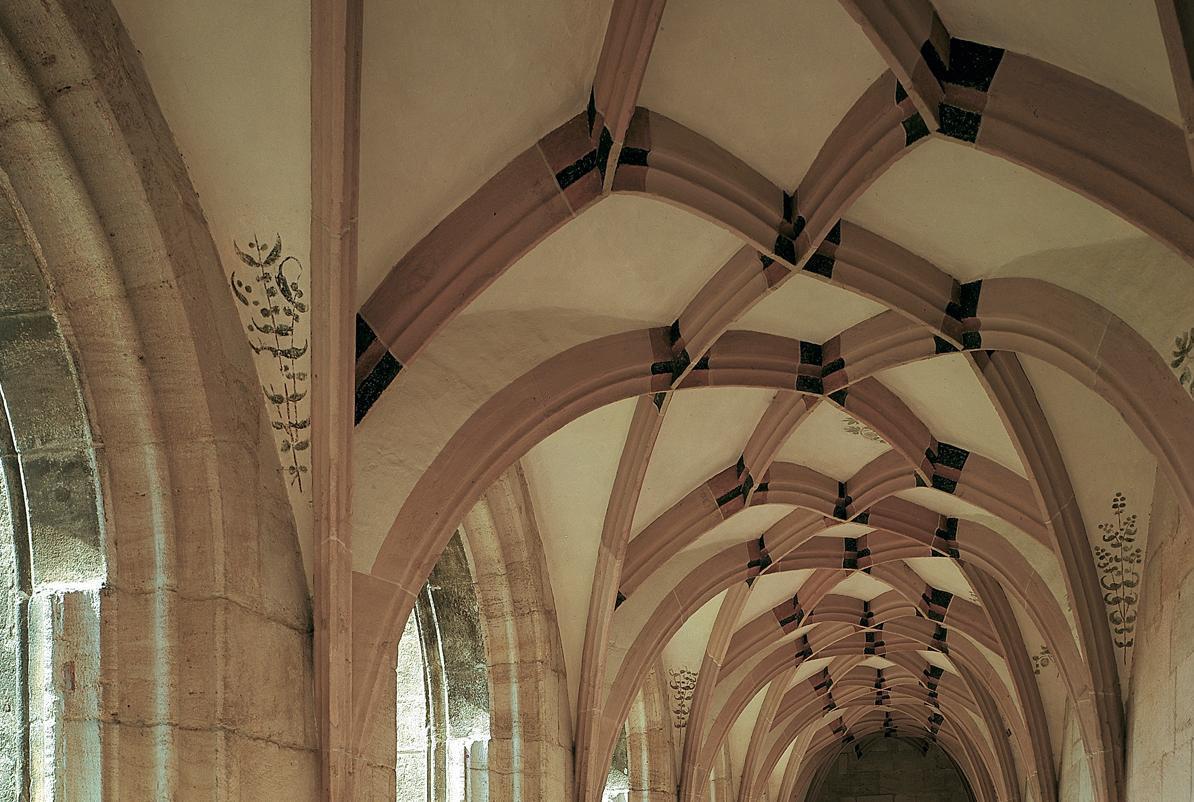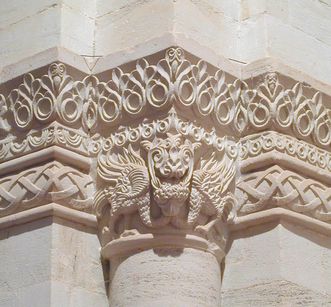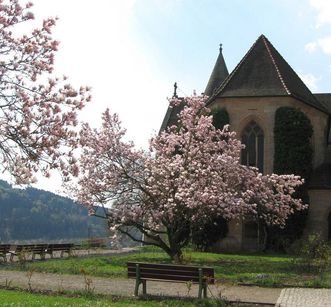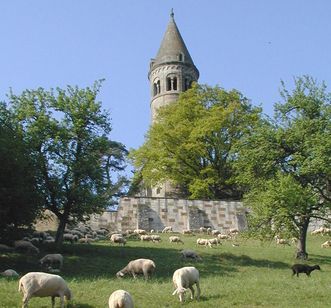The Romanesque style and the House of Staufen
The monastery church has been preserved from the time of the monastery's founding in the mid-12th century. Entering the nave with its mighty pillars, the impression is monumental. Typically Romanesque, the nave wall opens to the side aisles and the windows in the upper zone with round arches. The fine reliefs that decorate the capitals are likely from the period around 1200. However, as can be seen from the precision of the work, they were likely revised in the 19th century.






